Japanese kitchen knives are rightfully considered the best kitchen knives in the world. Their production is based on both centuries-old traditions and the latest technology. The most famous manufacturers of Japanese knives are Tojiro, Kasumi, Mcusta, Seki Kanetsugu, Ryusen Hamono and others. Also known throughout the world are Japanese blacksmiths who forge kitchen knives by hands: Yoshimi Kato, Takeshi Saji, Yu Kurosaki and others.
Japanese kitchen knives differ in many ways from the usual European ones: they are lighter, have special handles. As a rule, most Japanese kitchen knives are made using the sandwich principle (sanmai technology): a very thin and hard core in soft linings. The hardness of the blades of Japanese kitchen knives is higher than that of European ones. If in the West the indicator fluctuates between 54-58 HRC on the Rockwell scale, then the Japanese prefer hardening in the region of 60-62 HRC. The outer layers around such a hard core are made of both plastic steel and Damascus. The outer linings serve to strengthen and protect the central layer from corrosion, which is usually made of hard and brittle high-carbon steel. Japanese knives can be called razor-sharp without exaggeration. This is due to the design features of the blade. If the cutting edge angle of European kitchen knives is usually from 15 to 25 degrees, then Japanese products can have a value of 10 degrees (sometimes less or more). At the same time, the descents are more finely reduced at the leads. This gives Japanese kitchen knives the ability to cut perfectly.
Japanese knife names and purpose
Bunka is a small, utility knife. The blade length is usually between 13 and 18 centimeters. Bunka is similar to a small kiritsuke knife and can also be used for cutting meat and vegetables. Like kiritsuke, bunka has a tanto shape. This is convenient, since both the front part of the knife and the sharp tip can be fully used. In general, bunka is not a very common type of knife even in Japan. Many people unfairly ignore this kitchen knife. Bunka has double-sided sharpening and a straight, thin cutting edge - this makes it very convenient for shredding. As a universal, multi-purpose kitchen knife, bunka will be an excellent tool.

Deba (Deba Bocho) is translated as "thick knife". True to its name, it is a heavy knife with a blade up to 6-7 mm thick. Deba has a one-sided sharpening and is primarily intended for cutting fish. However, this kitchen knife is also great for cutting and slicing meat and poultry. Deba comes in several different types and sizes. There are very small models with a blade of about 13 cm, but in most series of kitchen knives, the length of the deba blade is 16-20 cm. Deba is very popular in Japan and is often used as the main chef's knife, because in fact it has a very wide functionality: separating fillets from bones, slicing, chopping tendons, cartilage, small bones.
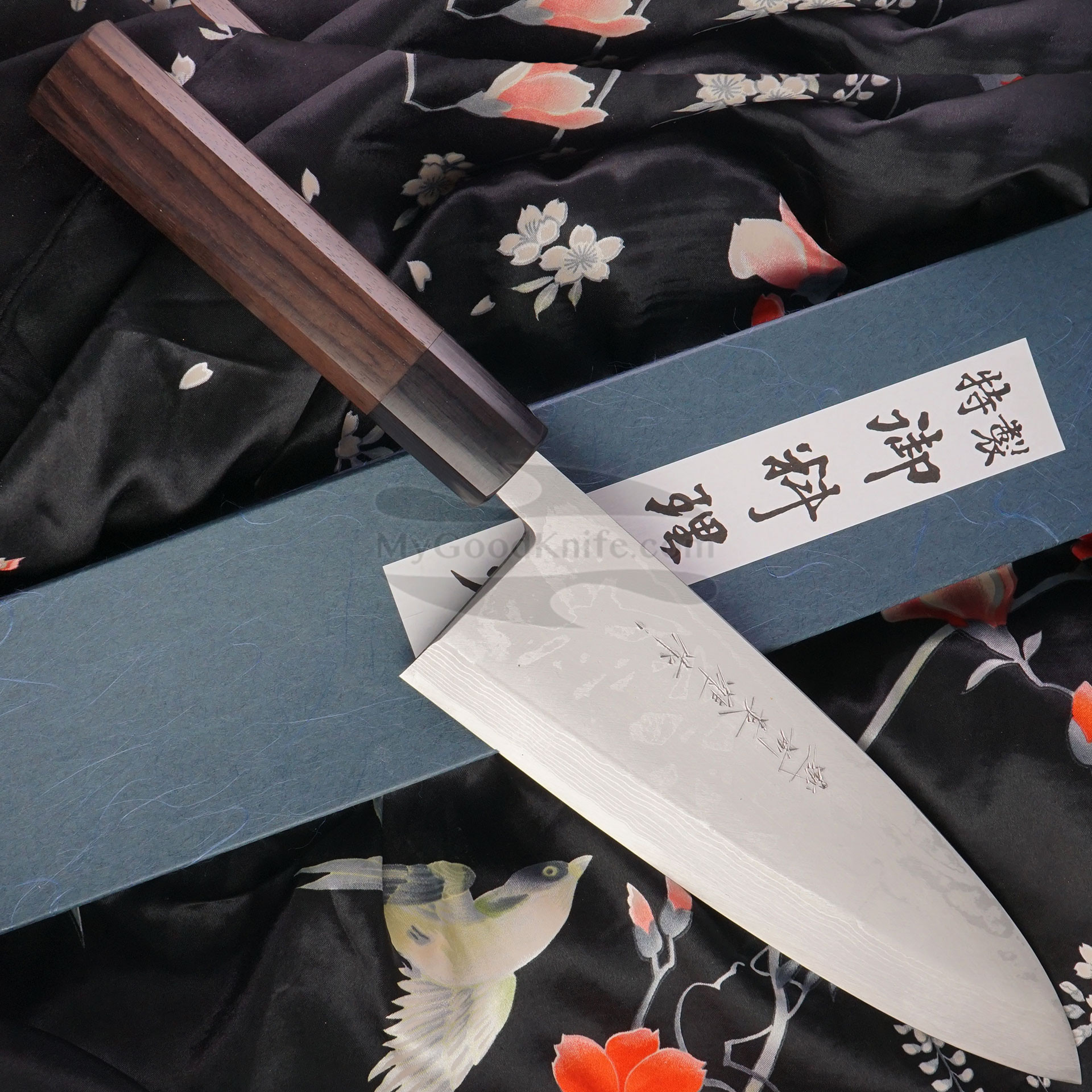
Gyuto is the name of the classic chef's knife in Japan. Gyuto came into use only at the beginning of the 20th century and its appearance was due to the penetration and spread of Western cuisine in Japan. This is a universal kitchen knife with a symmetrical blade profile, almost a complete analogue of European "chefs". Initially, gyuto (translated approximately as "cow blade") was developed for cutting beef. It differs from the Western universal knife both in its thinner profile and thinner cutting edge. It is very similar to the European chef's knife of the French profile. The length of the gyuto knife blade is 18-25 cm.
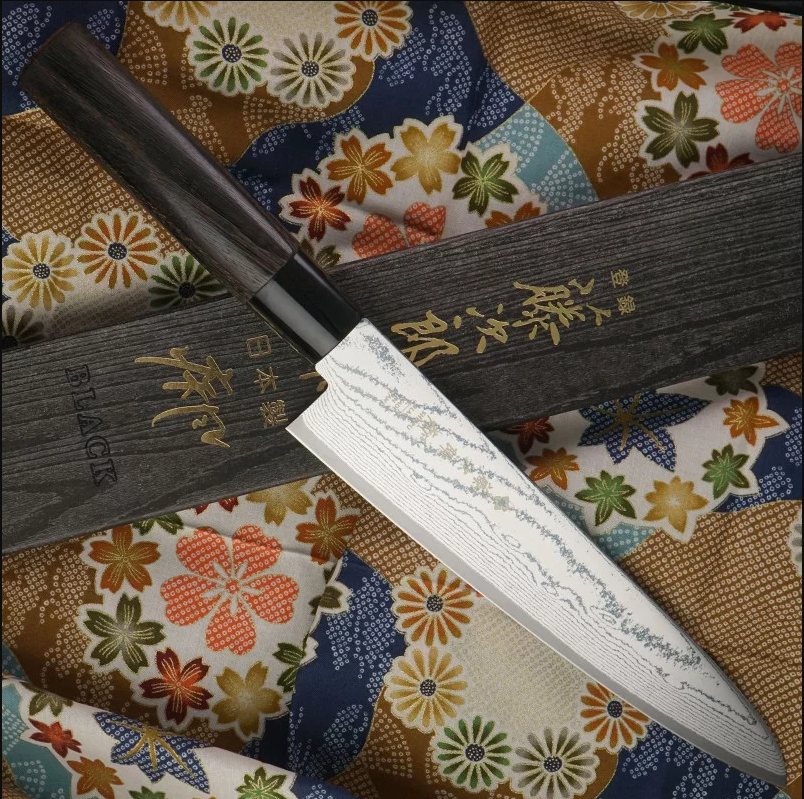
Kiritsuke is a large, all-purpose Japanese kitchen knife. A hybrid of usuba and yanagiba. It can be sharpened on one side or both sides. Kiritsuke is thinner than the gyuto chef's knife, which gives it the properties of a yanagiba and a slicer. It is believed that in Japan, only the chef is allowed to use the Kiritsuke in the kitchen. The blade is 20 cm long, the cutting edge is straight. Kiritsuke has a tanto profile and its tip is convenient to use when cutting. The kiritsuke kitchen knife has recently become increasingly popular, and for good reason: it combines the qualities of a chef's knife and a slicer.
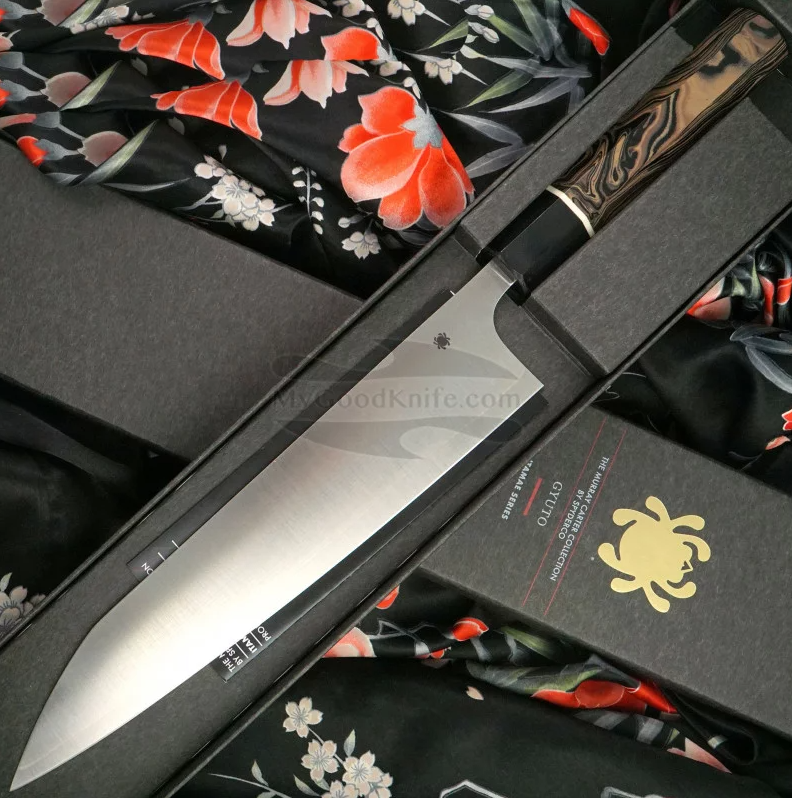
Nakiri (nakiri bocho) is translated as "knife for cutting greens". Nakiri is not suitable for cutting meat or fish with bones and is used exclusively for cutting vegetables and shredding greens. Nakiri has an almost rectangular blade and a very thin cutting edge. If you often chop vegetables and greens, nakiri will become your indispensable assistant. The length of the nakiri blade is usually 16-18 cm. There are two types. Kansai (or "Western style") has a straight cutting edge. The second type, with a more rounded cutting edge - "Kanto", is more often called Tokyo style. The origin of the names is simple: Kanto is a metropolis with its center in Tokyo, and Kansai is with its centers in Osaka and Kyoto. Hence the names. Like santoku, nakiri today is found in the collections of almost all knife manufacturers - not only Japanese, but also European. Therefore, you can find models with both traditional Japanese wa handles and classic western with three rivets.
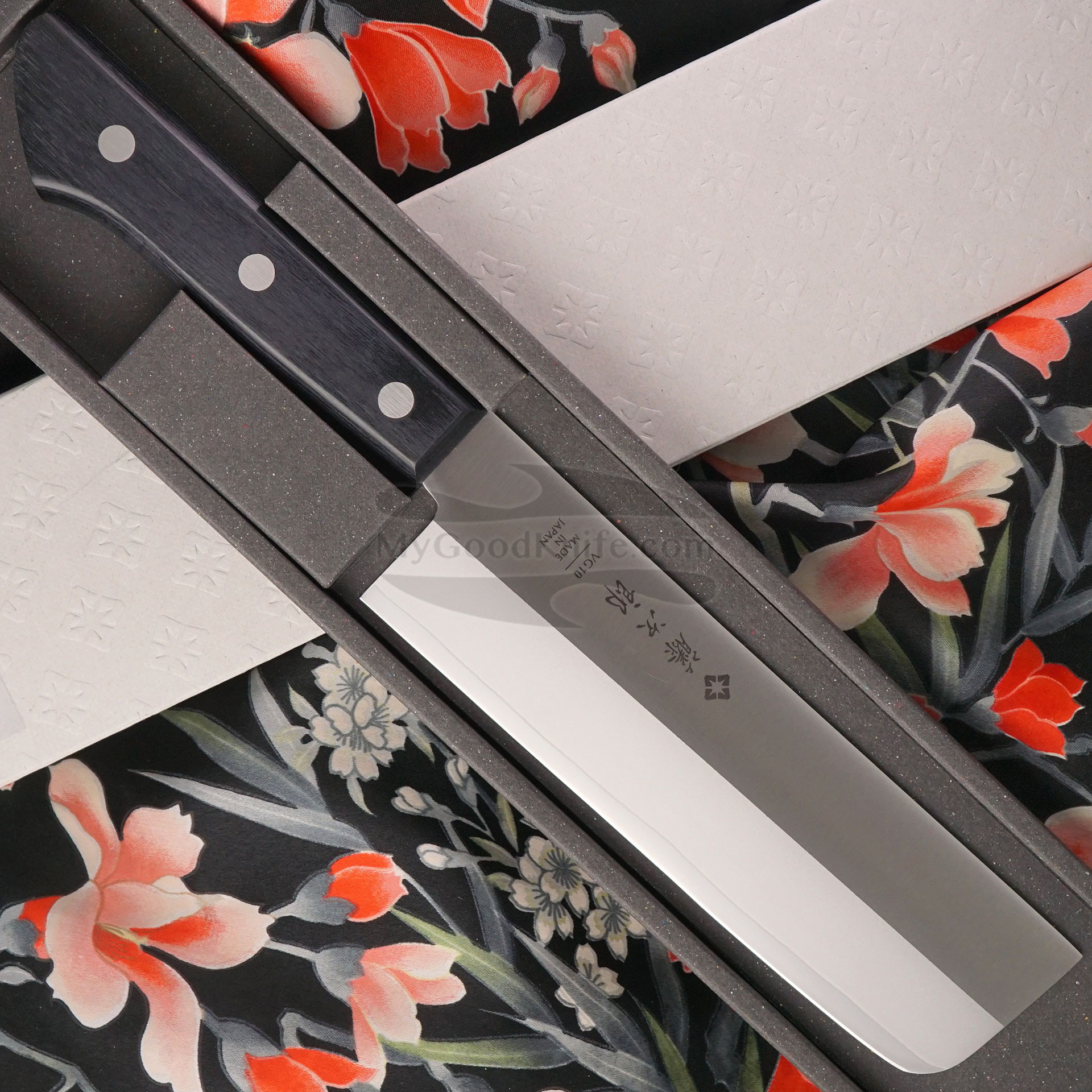
Santoku is a utility kitchen knife with double-sided sharpening. Perhaps, this is the most popular Japanese kitchen knife. "Santoku" literally translates as "three good things" or "three types of use". It means that such a kitchen knife is good for cutting, chopping and mincing. There is also a version that it means that the knife can be used for vegetables, meat and fish. Santoku, unlike the chef's knife familiar to western, has a different blade shape - its tip is lowered, and the cutting edge has a straighter shape. The blade length is usually 16-18 cm. Often there are air pockets on the santoku blade that prevent food from sticking.
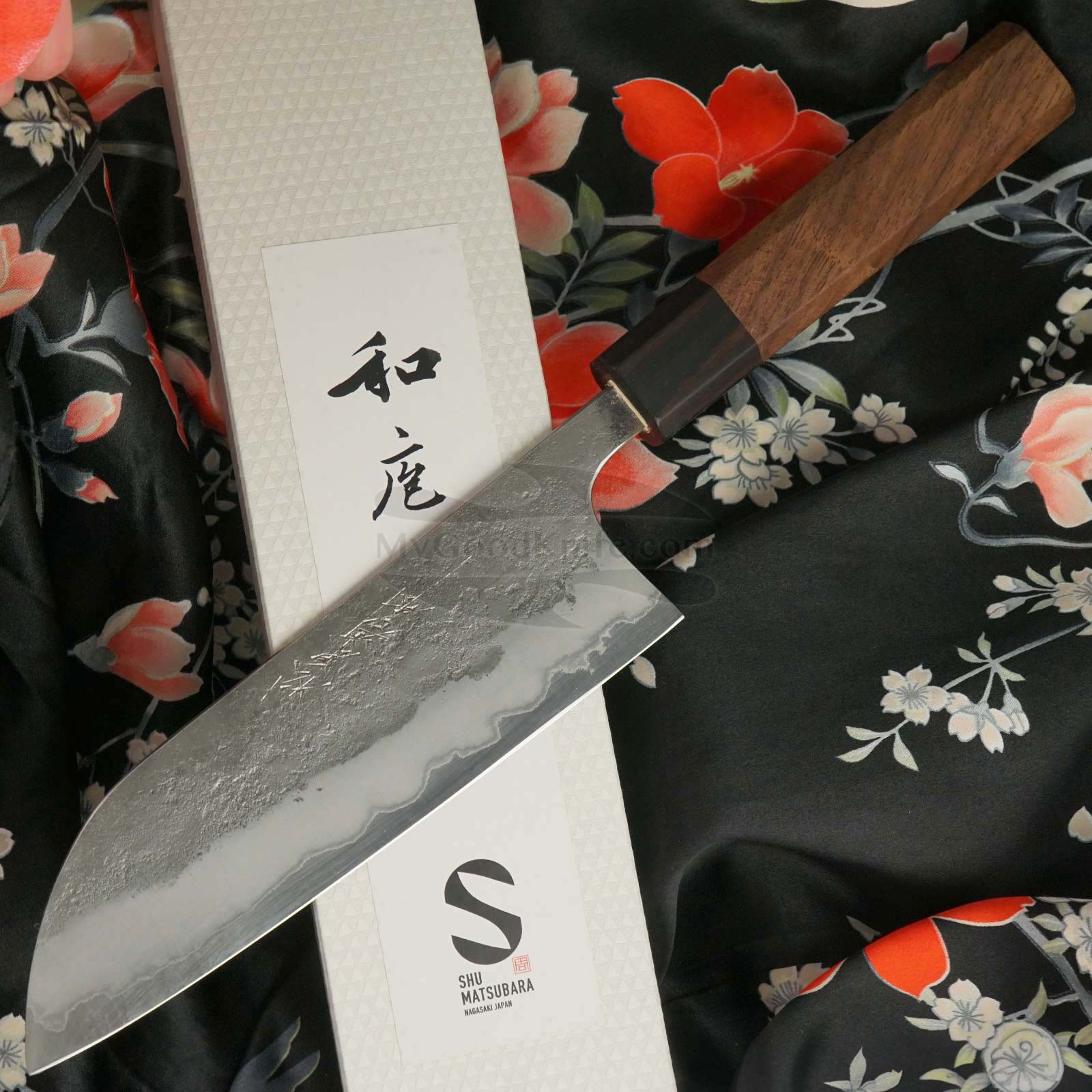
Sujihiki is a long, thin, pointed knife for cutting meat and also for removing fat from meat. Suji means "tendons" in Japanese, and hiki means "to pull". Sujihiki is similar to a slicer or a gourmet knife. It is easy to fillet fish with this knife. Unlike the Japanese sashimi knife, which is called yanagiba, the sujihiki knife has a double-sided sharpening. Therefore, it is perfect for thinly slicing any products. The length of the sujihiki blade is usually from 21 to 27 cm.
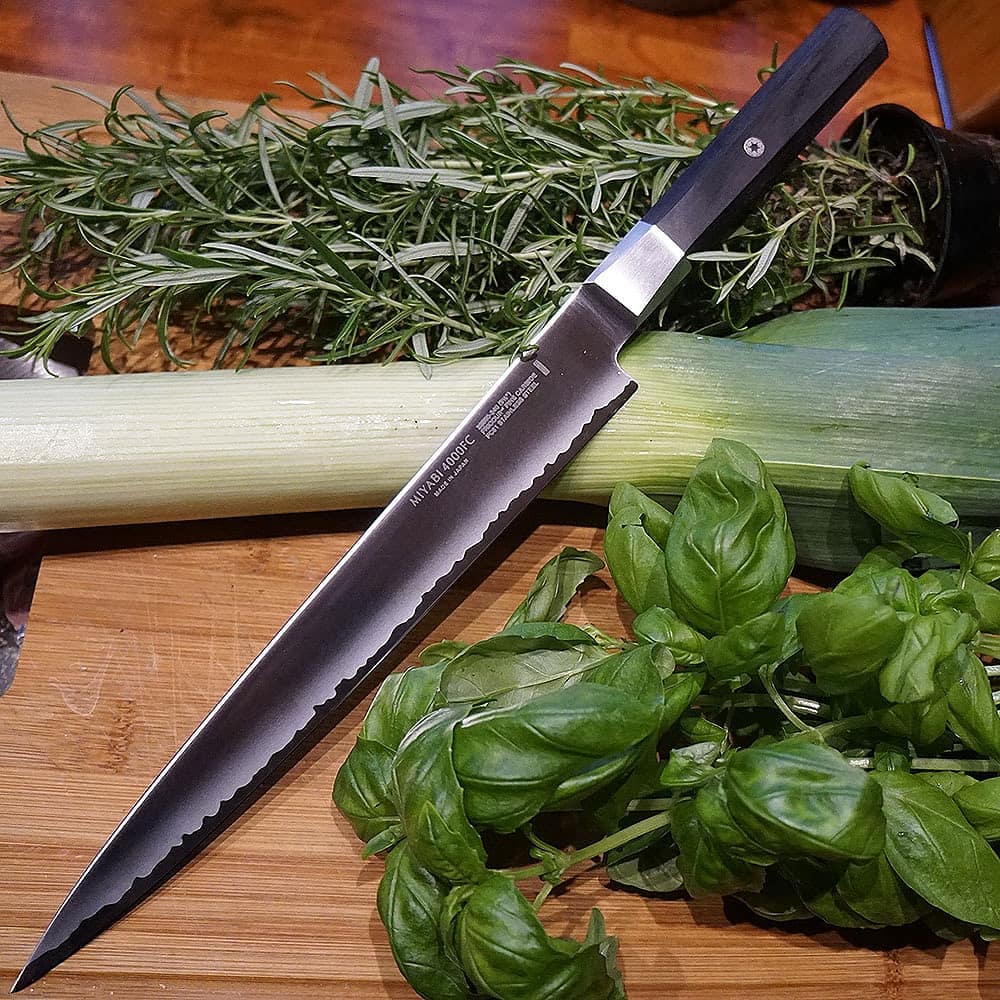
Yanagiba means "willow leaf" in translation. It is a long kitchen knife with a single-sided sharpening. Yanagiba is an indispensable kitchen tool for preparing fish fillets, sushi and sashimi. Yanagiba is not a flexible knife. The extremely thin, sharply sharpened cutting edge allows you to cut thin, neat pieces of fish. The length of the blade of a yanagiba is usually 27-33 cm.
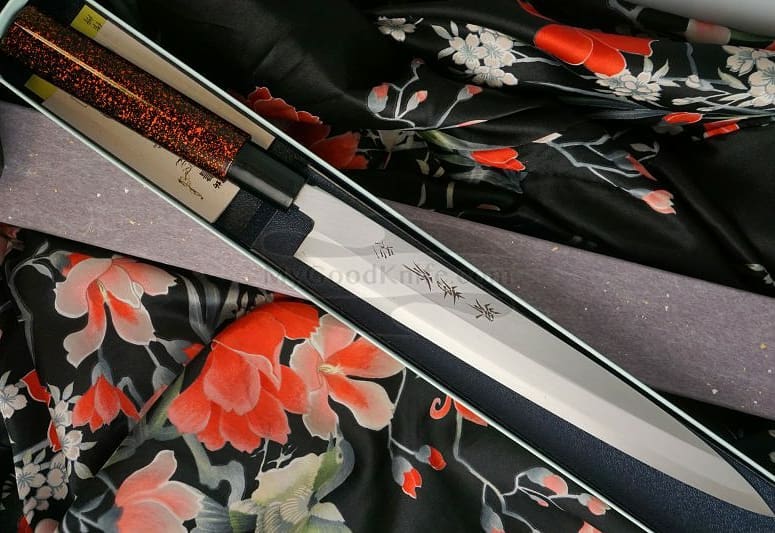
There are many more types of Japanese knives: usuba, honesuki and others. You can buy most of them in our store.
How to choose Japanese kitchen knives: a quick guide
Choosing the right Japanese kitchen knife depends on three factors: purpose, steel type, and comfort.
For general use, the Gyuto (Japanese chef's knife) is a versatile option, suitable for slicing meat, vegetables, and fish. The Santoku is also an ideal all-rounder, as it can be used for slicing and shredding. If you work more with vegetables, consider the Nakiri. For fine work, such as slicing fish or making sushi, the Yanagiba or Deba are better choices.
When choosing a steel, consider how often and carefully you can maintain the knife. High-carbon steel blades (such as Aogami and Shirogami) stay sharper longer and are easier to sharpen, but they require more maintenance to avoid rust. Stainless steel knives require less maintenance, but will need sharpening more often. The best option for beginners is Japanese kitchen knives made of VG10 steel, which has all the properties of high-carbon steels, but is resistant to corrosion.
When it comes to comfort, choose a handle that fits your hand comfortably, and also consider the weight of the knife. Traditional Japanese handles (wa-handle) are lightweight and provide better control, while Western-style handles (yo-handle) may feel more familiar to some users. A good knife should feel like a natural extension of your hand.
In Japan, kitchen knives are treated with great respect. No wonder, Japanese wisdom says that the knife contains the soul and heart of the cook. The best Japanese kitchen knives with delivery can be bought in the MyGoodKnife store.
 Paracord: What It Is and How to Use ItRead more
Paracord: What It Is and How to Use ItRead more Can You Give Knives as a Gift: Traditions, Superstitions, and AdviceRead more
Can You Give Knives as a Gift: Traditions, Superstitions, and AdviceRead more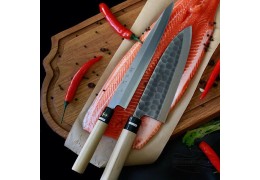 How to Sharpen Japanese Knives – A Complete Guide to Care and MaintenanceRead more
How to Sharpen Japanese Knives – A Complete Guide to Care and MaintenanceRead more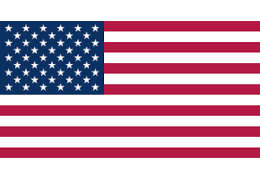 Delivery to USARead more
Delivery to USARead more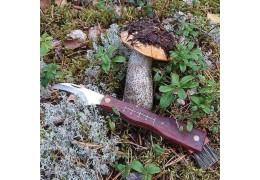 Mushroom knife: why you need it and how to choose the best oneRead more
Mushroom knife: why you need it and how to choose the best oneRead more







